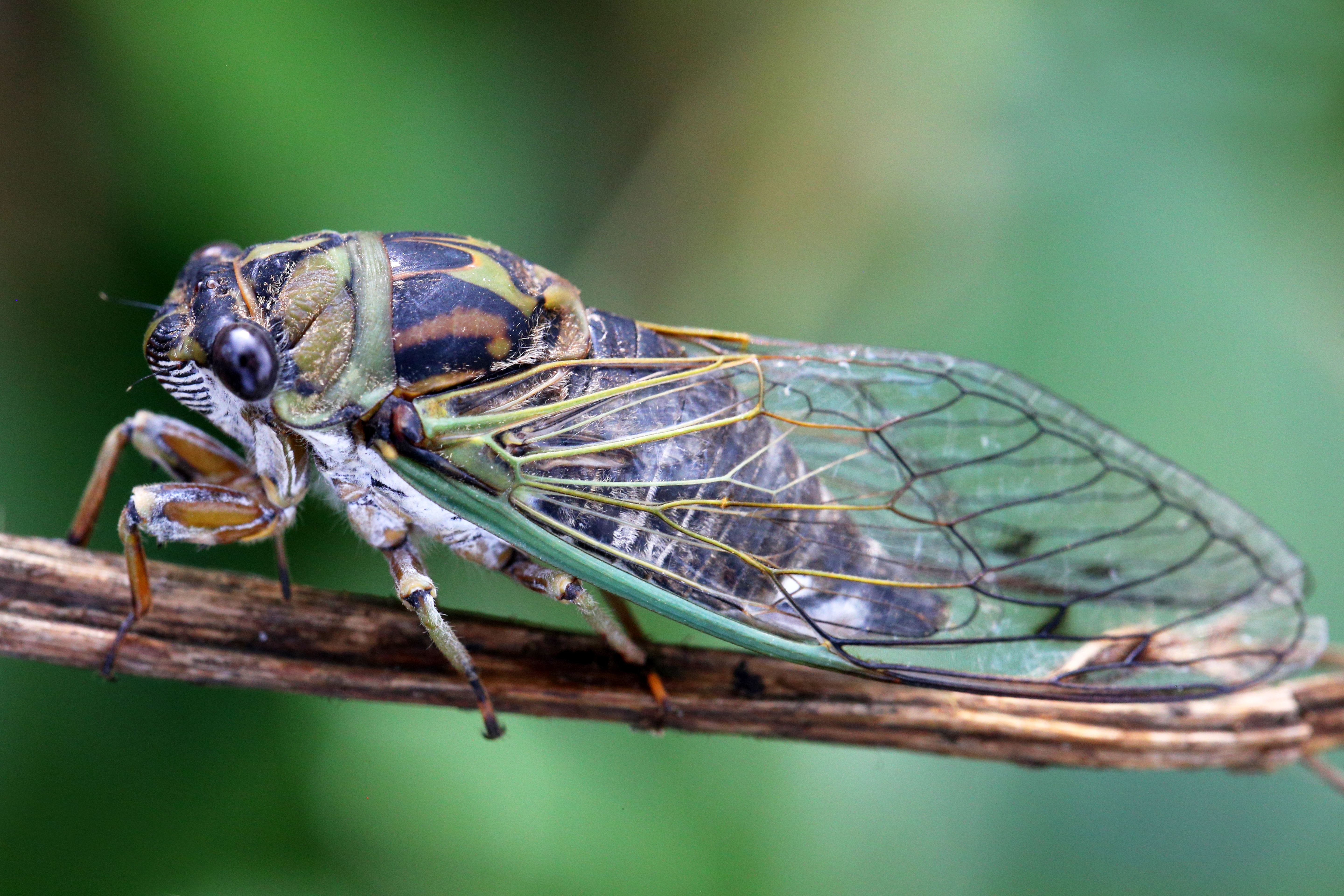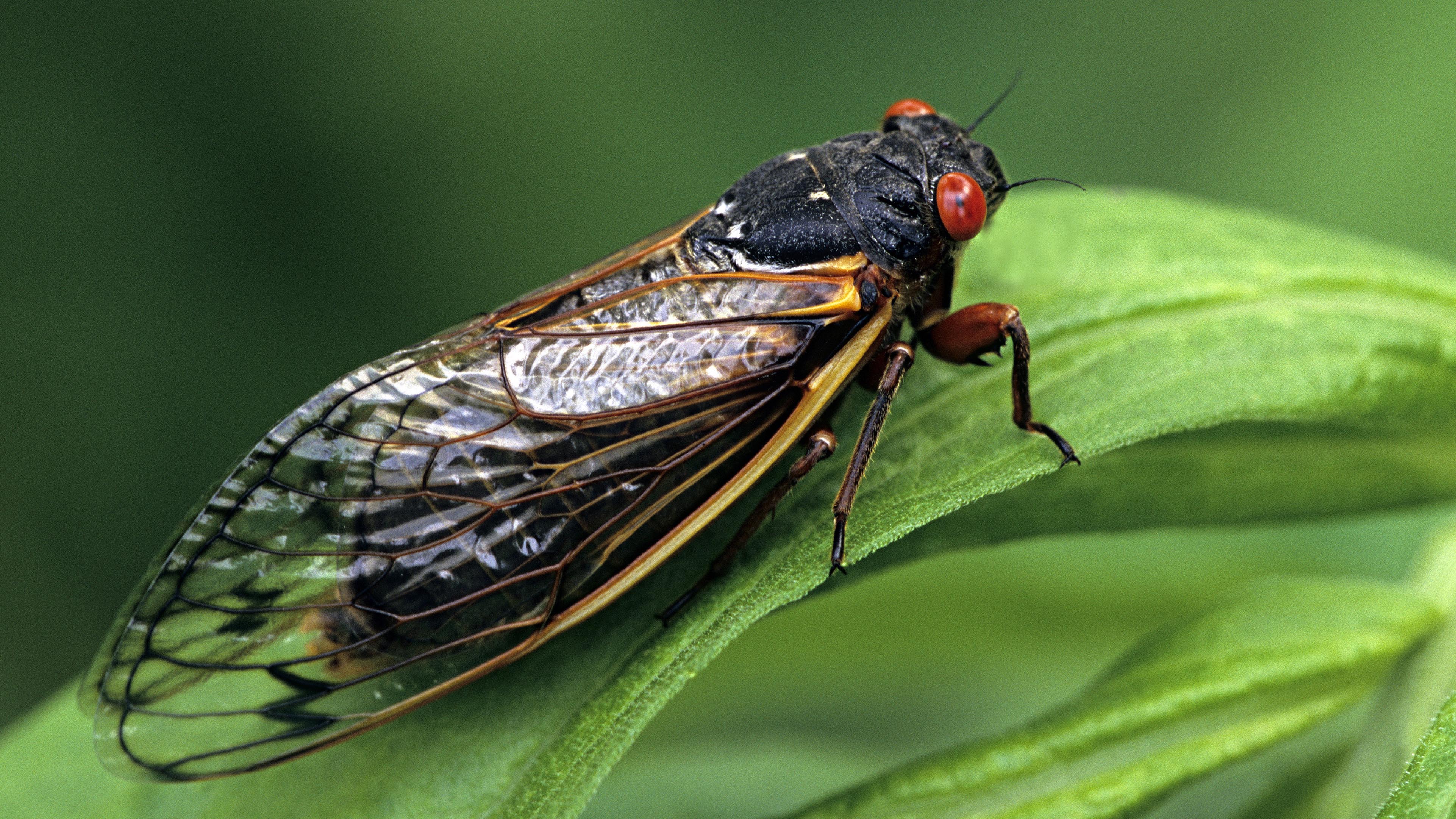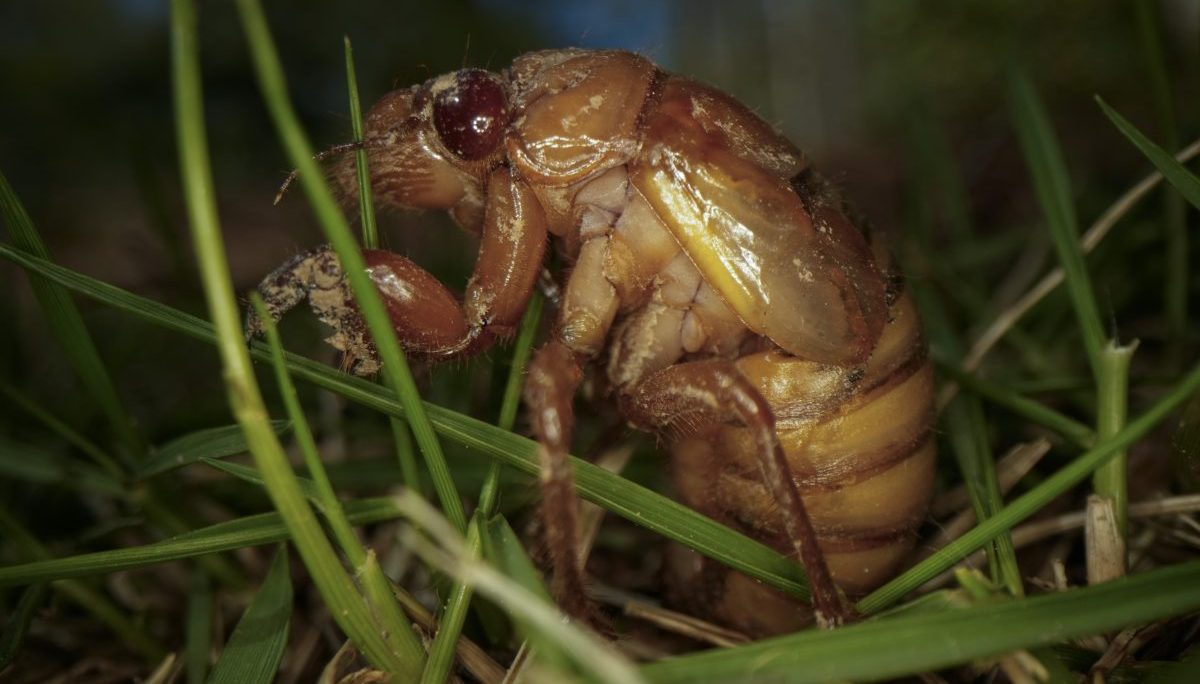
FILE – A Brood X cicada on a tree in Kickapoo State Recreation area near Danville, Illinois, on June 10, 2021.
A cicada in sync with its brood is a cicada with a chance.
The insects’ synchronized emergence is an evolutionary strategy, scientists say. Birds, raccoons and other predators can eat only so many of them. So the more cicadas emerge together, the better the odds that more will live on to reproduce and pass along their genes.
“They have the safety-in-numbers strategy,” said Chris Simon, a professor of ecology and evolutionary biology at the University of Connecticut who studies the insects.
The rare cicadas that lose track of time and emerge without their kin, by contrast, are sometimes called “stragglers.” Most small groups of stragglers get snapped up and don’t survive to reproduce.
“Natural selection has favored individuals who wait, because the ones who don’t wait get eaten,” Simon said.
This summer, the number of periodical cicadas is expected to be extra large, as two broods emerge at the same time. The last time these two emerged together was in 1803. Tens of billions of the insects are predicted to surface. Users of the Cicada Safari app, which is designed to report cicada sightings and help scientists track the insects, have tallied more than 1,000 sightings in Georgia and hundreds in North Carolina and Alabama.
Periodical cicadas fall into two categories of brood, or age class: those that take 13 years to emerge and those that take 17 years. Temperature seems to trigger when they pop out, but how exactly they set their internal clocks or communicate when to come up from the ground together remains somewhat mysterious.
Cicadas
What’s more, scientists say they’ve noticed some changes in the insects’ rhythms, which has led to hypotheses that rising temperatures may be rewiring the internal clocks of some periodical cicadas.
Gene Kritsky, an entomologist and cicada expert at Mount St. Joseph University in Ohio, said that as average temperatures have climbed higher because of global warming, the dates of emergence have shifted earlier in the calendar year.
Get a weekly recap of the latest San Francisco Bay Area housing news. Sign up for NBC Bay Area’s Housing Deconstructed newsletter.
“Cicadas are insects of the climate,” he said, adding, “They’re now emerging almost 10 days to two weeks earlier than they did in 1940.”
John Cooley, a University of Connecticut cicada researcher who maps cicada broods, said he expects the bugs’ range to shift northward as the climate warms and the plant species they prefer shift north.
He also noted an increase in reports of stragglers, a trend that is intriguing researchers.
“If you look at the data, we definitely have more reports of straggling now than we ever did in the past,” Cooley said. “That could be because there’s more straggling than there was in the past or because we have the internet and if you see this strange bug in the yard, you can send it in.”
Simon said Brood XIII, which is emerging this year, produced a record number of stragglers in 2020.
“This time four years ago, there were so many that they were out for the entire four weeks,” she said. “They weren’t completely eaten. They were able to sing and lay eggs. So they could be forming a new population.”
“They’re definitely responding to climate warming and growing season length,” Simon added.
Simon has a theory about how climate change may be playing a role: She thinks rising temperatures are lengthening the growing seasons of the plants that cicadas feed on, supercharging the insects’ development underground. That, in turn, may cause many more “stragglers” to emerge early. Eventually, she said, the entire population will adapt and shift timing.
Simon predicted that 17-year cicada broods will shift to become 13-year cicadas. And 13-year cicadas might emerge every nine years.
If the theory proves true, it would be yet another example of how climate change is disrupting the regular cadences that have governed the natural world.
Periodical cicadas, which are harmless to people, are distributed across the Eastern and Midwestern U.S. Unlike annual cicada species, which reappear every year, the emergence of cicadas like the ones popping out now in the Southeast is a special event. The U.S. is home to 12 broods that emerge on 17-year cycles and three broods that have 13-year cycles.
During their years underground, periodical cicadas spend their time feeding on plant roots. Once they’re above ground, they participate in a song-filled mating ritual, trying to lay eggs before they become lunch for a bird or a raccoon.
Scientists are still trying to figure out exactly how cicadas select a particular span of days to emerge together.
Although temperature clearly plays a role, ground temperatures are rarely uniform in cicada habitat, and the insects are often buried at different layers in the soil. A study this year said there’s not an obvious explanation for the success of cicadas’ coordination and suggested that scientists should investigate whether they can communicate beneath the ground.
“Nobody’s ever studied this,” Simon said.
The story first appeared on NBCNews.com. More from NBC News:




